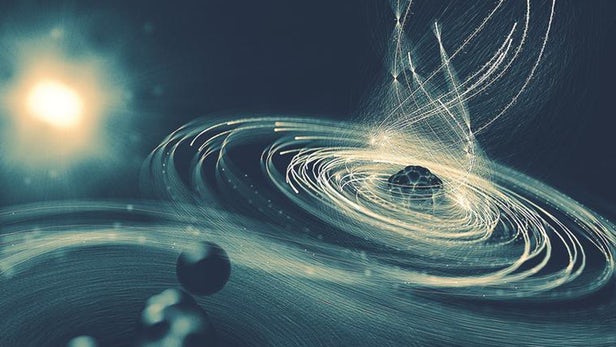"Molecular black hole" created by the world's most powerful x-ray laser

In this illustration, a molecule's iodine atom is struck by an intense x-ray beam, causing it to lose electrons and begin sucking in more from the atoms around it, in what the team calls a molecular black hole effect (Credit: DESY/Science Communication Lab)
The Linac Coherent Light Source (LCLS) is the world's most powerful x-ray laser, and it's designed to help scientists uncover the secrets of the microscopic world in more detail. In the past the instrument has been used to create a kind of mini-star in the lab, and now it's made a "molecular black hole" by concentrating the full intensity of the beam onto a single atom.
The LCLS can snap high resolution images of individual viruses, bacteria, proteins and molecules. The system works by blasting objects with extremely bright x-ray pulses lasting just femtoseconds (about a million-billionths of a second) that generate enough energy to cut through steel. Studying microscopic objects with the LCLS could improve our understanding of particle physics, drug development, photosynthesis, nuclear fusion, and spintronics.
The molecular black hole was an unexpected byproduct of experiments conducted by researchers from Kansas State University. The team used mirrors to focus the x-ray beam onto a spot 100 nm wide, which is about 100 times smaller than the equipment usually targets. The plan was to test how heavy atoms react when hit with hard x-rays, carrying the highest possible energy that the LCLS can produce.
"They are about a hundred times more intense than what you would get if you focused all the sunlight that hits the Earth's surface onto a thumbnail," says Sebastien Boutet, co-author of the study.
With that ridiculous amount of energy harnessed, the team targeted xenon atoms, which contain 54 electrons each, and iodine atoms, which have 53 electrons. It was expected that the innermost electrons in each atom would be stripped away to create "hollow atoms," before electrons from outer layers would cascade down to fill the gaps. These would then be blasted out by the next x-rays, leaving only the most tightly-bound electrons.
This is exactly what happened to the xenon atoms, which were isolated, but it wasn't the case for the iodine. These atoms were part of two different, larger molecules, so when they lost electrons they became a kind of molecular black hole, sucking in more from the adjacent carbon and hydrogen atoms to fill the void left behind. These electrons were then ejected as well, before the x-rays destroyed the molecules completely.
An isolated iodine atom would be expected to lose 47 electrons in this situation, but including the ones it absorbed from its neighbors, the smaller of the two molecules ended up ejecting 54. As for the larger one, the team hasn't been able to figure it out yet.
"We think the effect was even more important in the larger molecule than in the smaller one, but we don't know how to quantify it yet," says Artem Rudenko, lead researcher on the study. "We estimate that more than 60 electrons were kicked out, but we don't actually know where it stopped because we could not detect all the fragments that flew off as the molecule fell apart to see how many electrons were missing. This is one of the open questions we need to study."
Although the researchers didn't expect the atoms to be damaged so much, the findings did still agree with the theoretical models, which leads the team to believe the instrument can be used to study more complex systems.
"This has important benefits for scientists wishing to achieve the highest-resolution images of biological molecules to inform the development of better pharmaceuticals, for example," says Mike Dunne, Director of the LCLS program. "These experiments will also guide the development of a next-generation instrument for the LCLS-II upgrade project, which will provide a major leap in capability due to the increase in repetition rate from 120 pulses per second to 1 million."
The research was published in the journal Nature.
